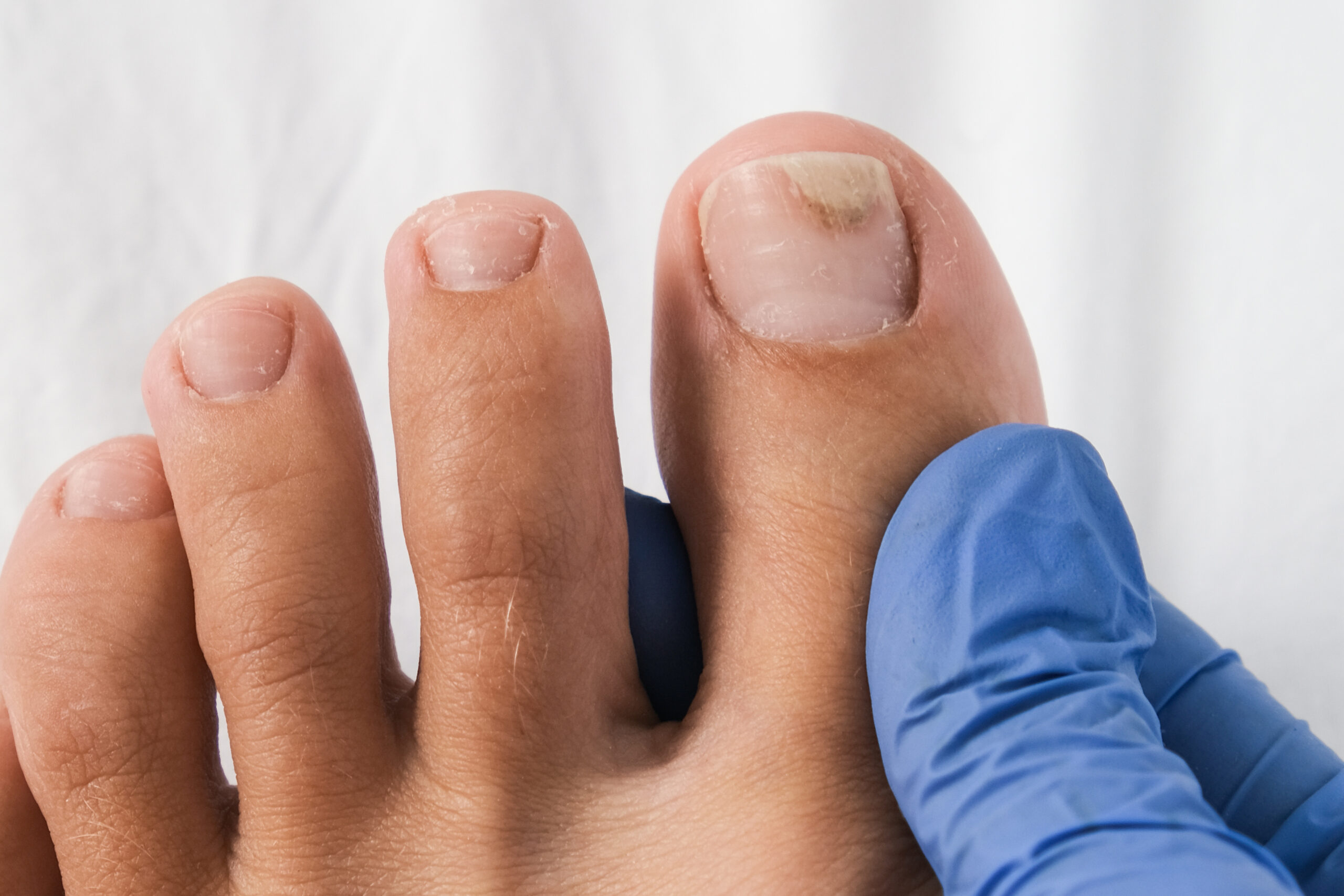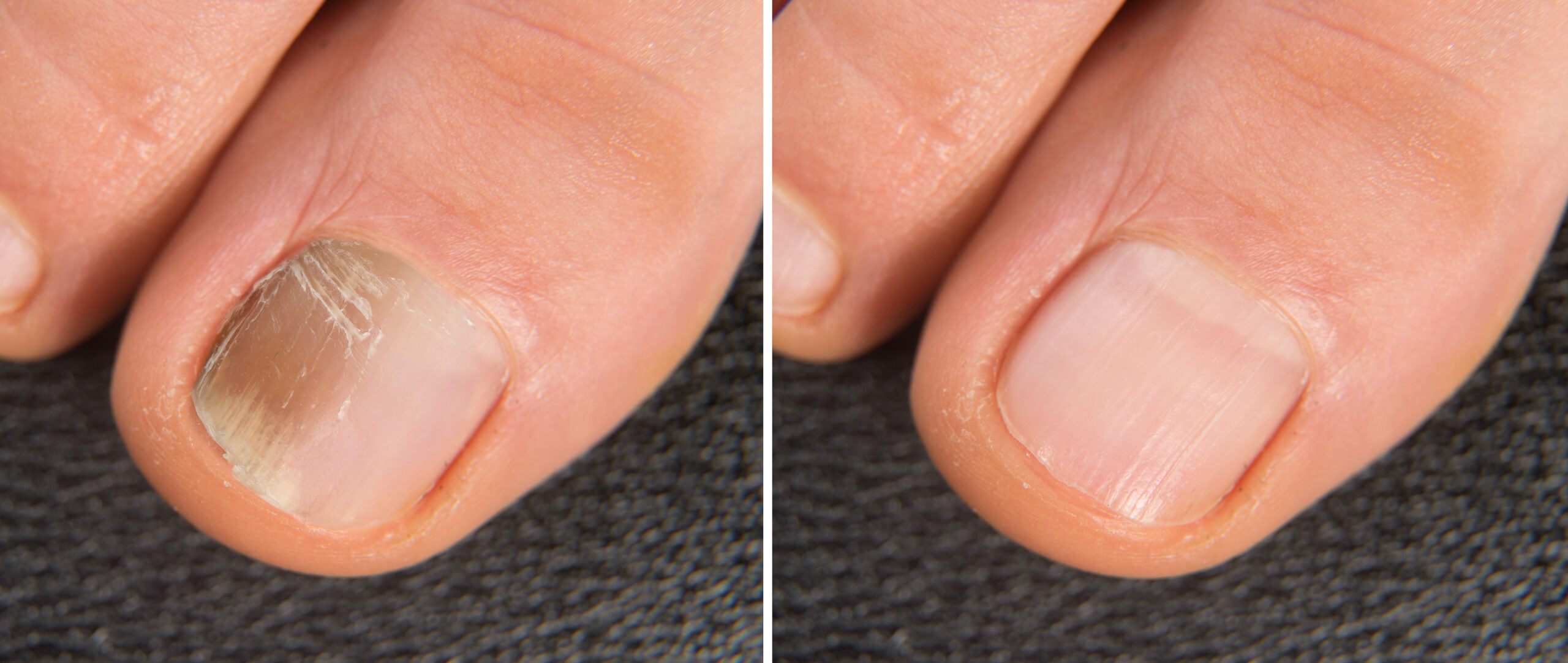How does nail fungus develop?
Nail fungal infections are caused by special fungi, known as dermatophytes, which infect the skin, hair and nails of humans.
Infection often occurs through direct contact with infected surfaces, such as those found in swimming pools, on damp floors or by wearing tight shoes. The fungus first infects the spaces between the toes (athlete’s foot) and then migrates laterally over the nail wall under the nail plate. As soon as the fungus penetrates the nail, it can spread quickly and leads to changes such as discoloration, thickening or brittle nails.
What are the symptoms of nail fungus?
- Thickening and discoloration of the nails (yellowish, greenish or brownish)
- Brittle or splintering nails
- Deformation of the nail shape
- Detachment of the nail from the nail bed
- Itching or pain around the nail area
- Spread to other nails or surrounding skin

Effective treatment of nail fungus in Frankfurt
Treating nail fungus is a lengthy and frustrating challenge for many sufferers, as conventional products such as nail solutions or special nail polishes often do not produce the desired results. These products usually do not penetrate deep enough into the nail to effectively combat the fungal infection at the root – the nail matrix. This can lead to a long-lasting and disappointing fight against the fungus.
At our dermatology practice in Frankfurt, we therefore rely on an innovative treatment approach that combines the use of nail fungus laser therapy with topical or systemic therapies. In this way, we maximize the effectiveness of the treatment and fight the fungus from different directions. Our experts in Frankfurt develop individual treatment plans tailored to the specific needs of each patient to achieve optimal results and promote long-term improvements.
Nail fungus laser - treating nail fungus with the laser
The Erbium:YAG laser with 2,940 nm is a solid-state laser that is particularly suitable for the treatment of fungal nail infections. Targeted heating of the nail to up to 300 °C effectively kills the fungal hyphae and spores. At the same time, pores are created in the nail which facilitate the penetration of antifungal nail solutions. Additional systemic therapy with antimycotics protects the newly growing nail tissue from re-infection.
Nail fungus laser treatment is usually virtually painless and takes around 10 minutes per foot. As nails grow slowly and re-infection is possible, we generally recommend 4 to 6 laser treatment cycles. The costs of medical pedicure and laser treatment are usually covered by private health insurance.

Tablet therapy - but which one is right for me?
There are various tablets that are used to treat nail fungus. To find out which one is best for you, we determine the genus and species of the fungus using PCR (genetic diagnostics). With the help of the analysis, we can then treat the causative fungus specifically with a medication that is effective for you.
Prevent nail fungus in the long term
There are various ways to prevent nail fungus. Here are some valuable tips to reduce the risk of a nail fungus infection and promote your health:
- Avoid damp environments and tight shoes: Reduce the risk of re-infection by avoiding damp environments and wearing tight/closed shoes.
- Dry your feet thoroughly: Make sure you dry your feet thoroughly after washing, especially between your toes.
- Avoid walking barefoot: If possible, avoid walking barefoot, especially on carpets or in public bathing establishments, to minimize contact with fungal spores.
- Disinfect shoes and socks: Disinfect your shoes and stockings regularly to prevent the transmission of fungi.
- Wash stockings hot: Use a heavy-duty detergent and wash your stockings at a minimum of 60°C to effectively kill fungal spores.
These measures support the effectiveness of nail fungus treatment, including laser therapy, and help to prevent relapses.


